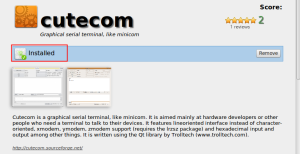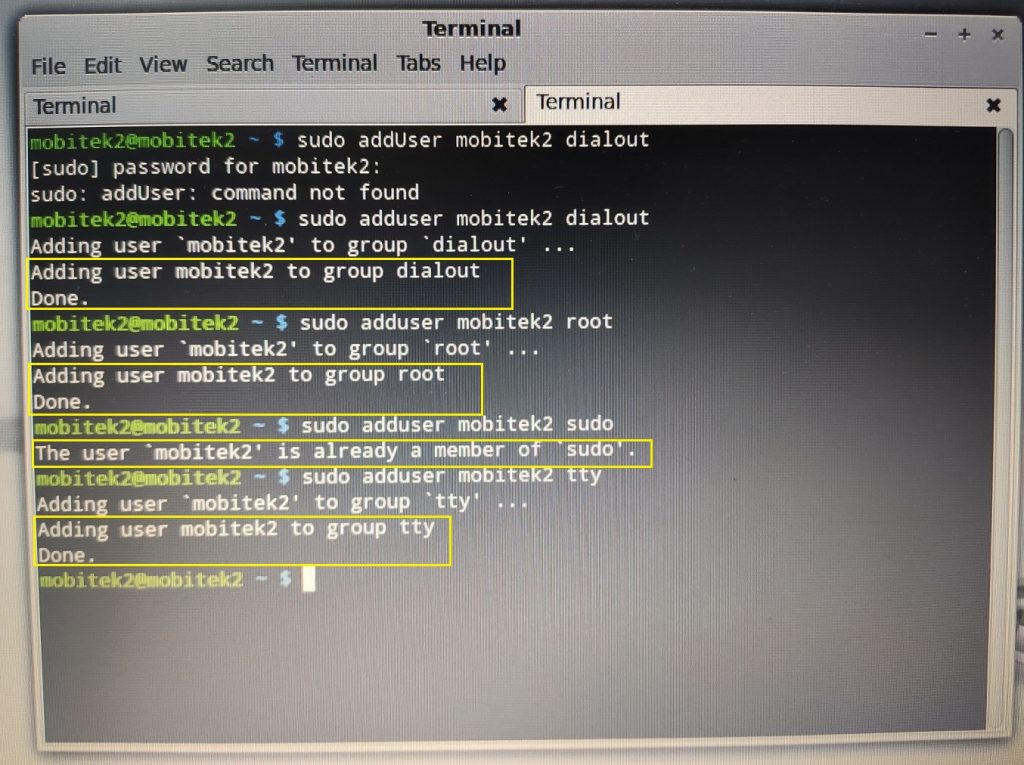Applies To: MOBITEK S80 Modem, MOBITEK Q24 Modem, Linux OS
Caused By: permission or privilege to use serial port or USB port is NOT assigned to current user.
Solution: grant permission to current user by adding “tty”, “dialout” into “Groups” of the current user.
- Optional — install “Cutecom” from Software Manager.
 Click on “install”
Click on “install”

- Go to “User and Groups”.

- Click on the current user and then click on “Groups”.

- Assign the following “Groups” or permissions to the user:-
- dialout
- root
- sudo
- tty
- Alternatively, command line can be used to add permission to the user:-

- Restart Linux.




